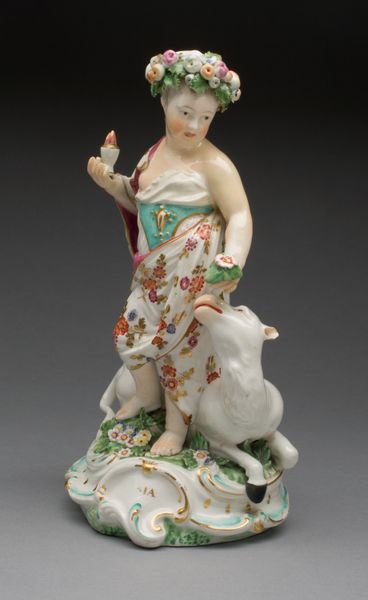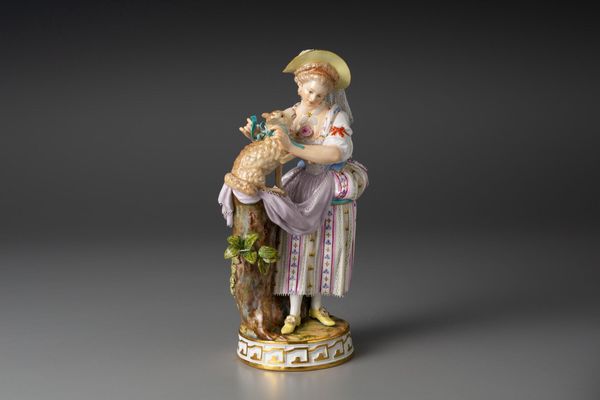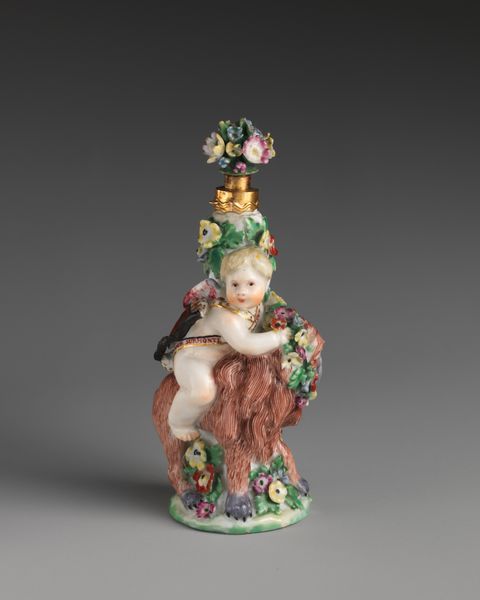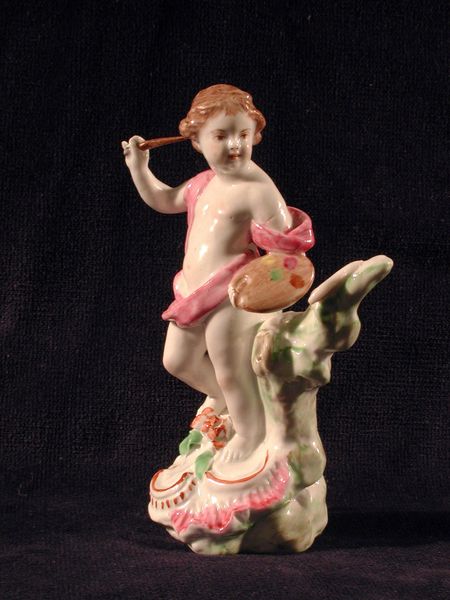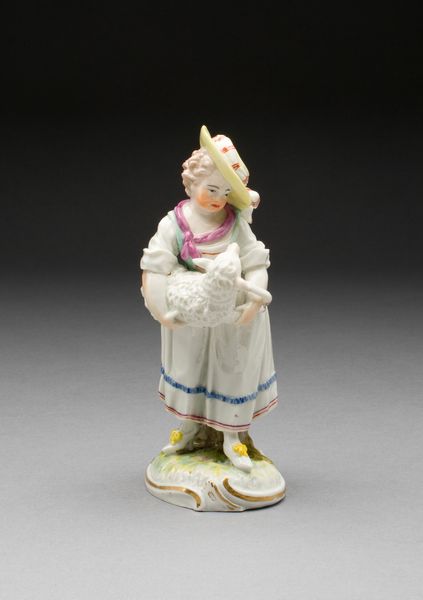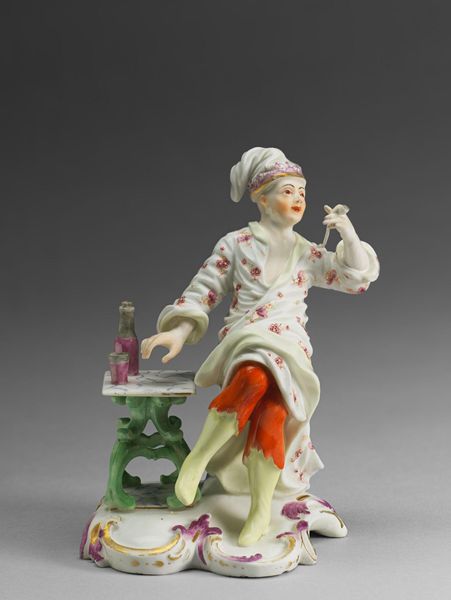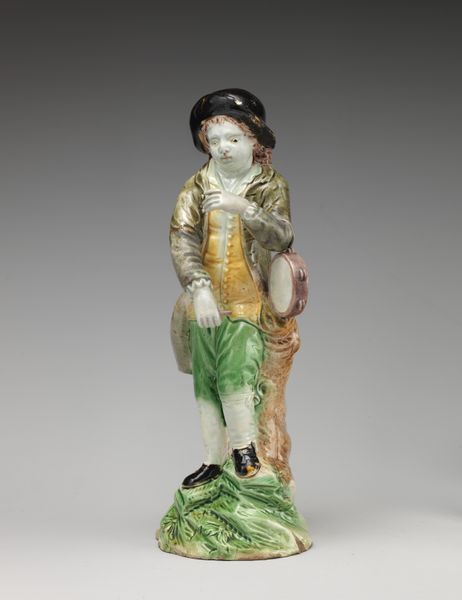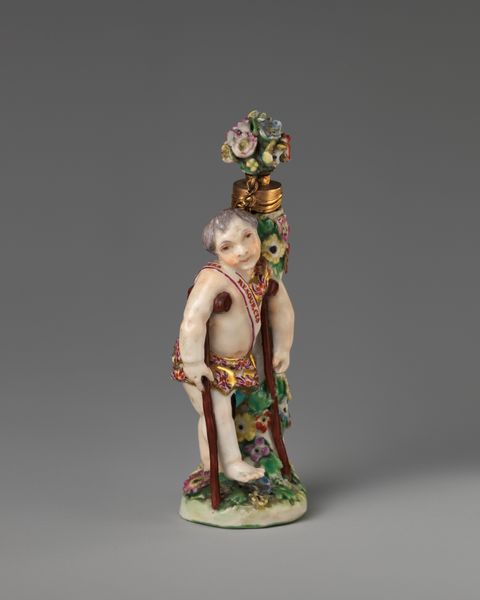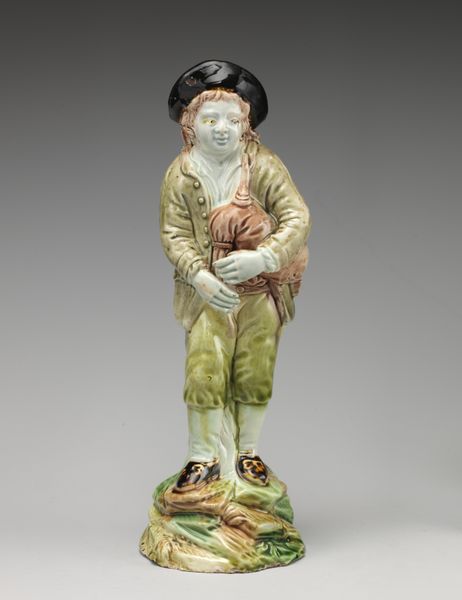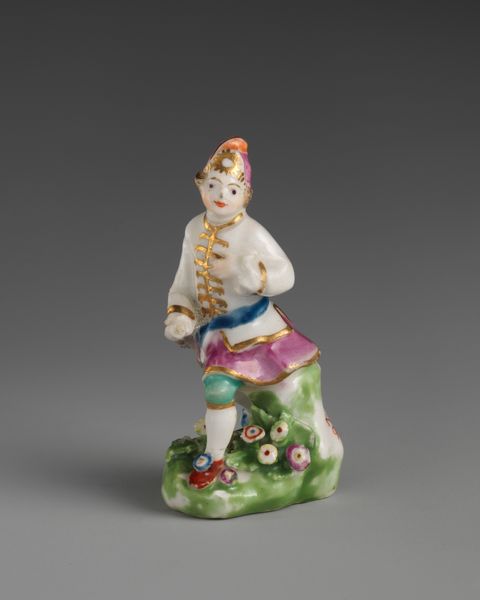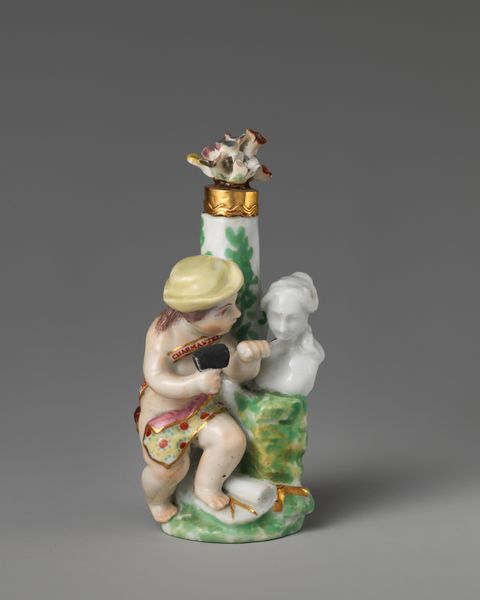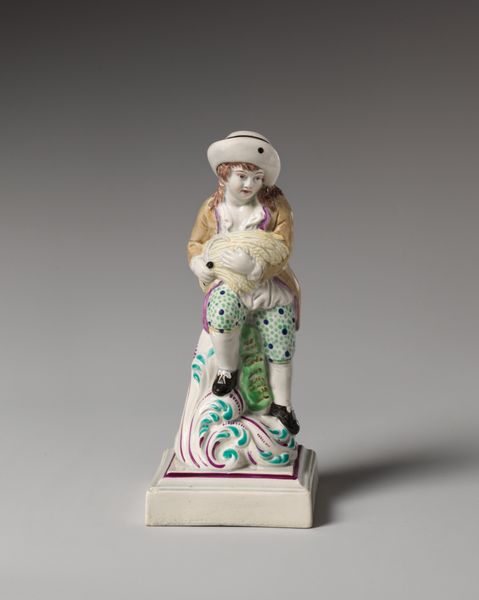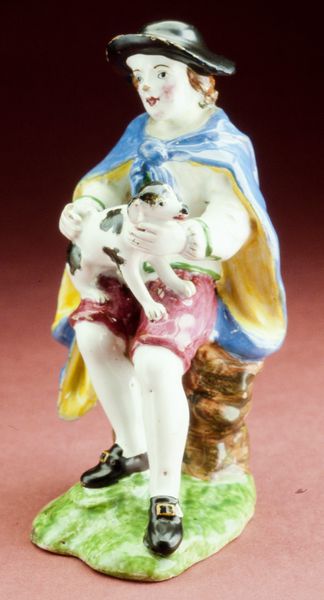
Dimensions: H. 25.1 cm (9 7/8 in.); base diam. 12 cm (4 3/4 in.)
Copyright: Public Domain
Curator: At the Art Institute of Chicago, we have a charming piece titled "Allegorical Figure of America," crafted between 1770 and 1780 by the Derby Porcelain Manufactory. Editor: My first impression is that it's quite whimsical. The figure is porcelain, giving it a delicate, almost ethereal quality. And the rococo style lends itself well to the ornamental details; the base looks very fanciful! Curator: The sculpture represents America through allegory, which was very common in the decorative arts of the period. The figure, a young boy really, embodies the “New World” in European imagination. Editor: Interesting. It's easy to miss, but his foot is firmly planted on what seems to be an alligator! There is an odd contrast in scale. Is it meant to represent subjugation, do you think? Curator: Precisely. The alligator, native to America, is there as a symbol of the land being dominated. This piece reflects the Eurocentric colonial views of the era and the use of classical figures as personifications of continents or new lands. Editor: The figure itself has this striking flower crown that really frames the face. I wonder what the artist was trying to emphasize with that. Curator: It signifies a wealth of natural resources, as the land was seen as bountiful and ripe for exploitation by European powers. Note also his skirt adorned with what appears to be stylized feathers. This type of ornamentation became visual shorthand to represent peoples across the Atlantic in artistic settings during that period. Editor: It’s strange to think how aesthetics and political viewpoints became entwined during these moments in history. It feels delicate yet potent. Curator: Right. The statue speaks volumes about 18th-century views on global power dynamics, European dominance, and colonial enterprises rendered in elegant, almost saccharine porcelain. Editor: Understanding that history helps one appreciate the artwork's significance beyond just its visual appeal and ornate details. I see a more complex layering than I had originally perceived. Curator: Indeed. I always appreciate these tangible moments that serve to illustrate cultural dialogues from a bygone era.
Comments
No comments
Be the first to comment and join the conversation on the ultimate creative platform.

